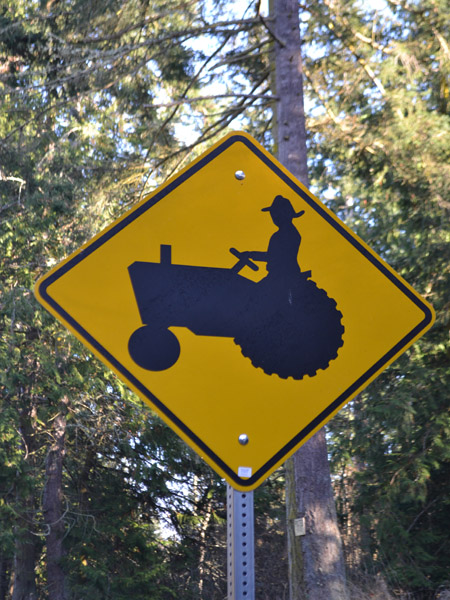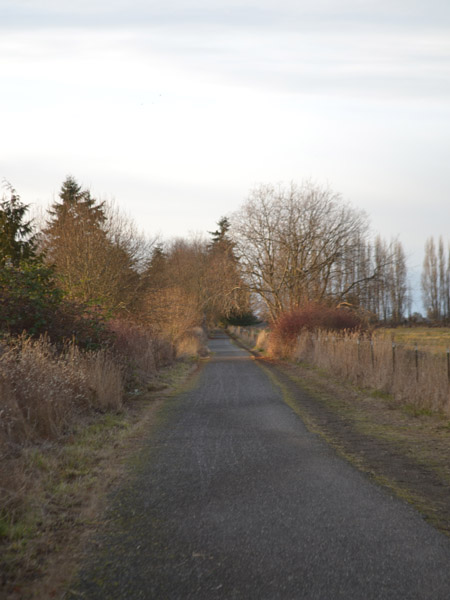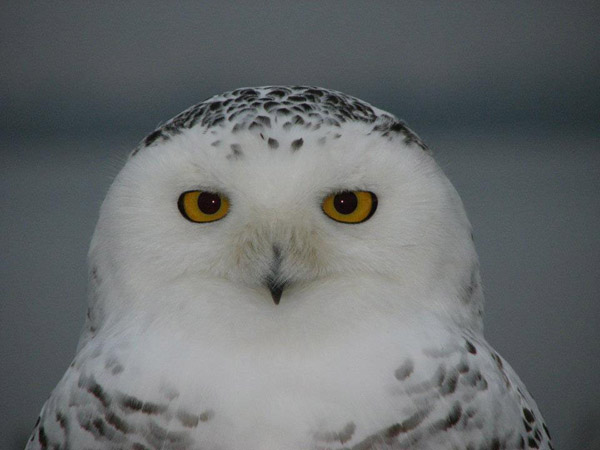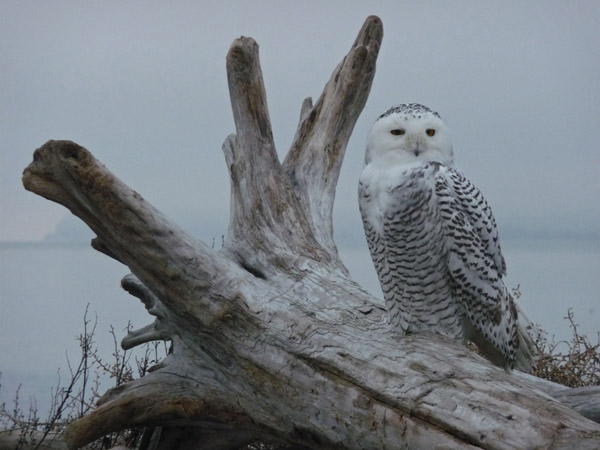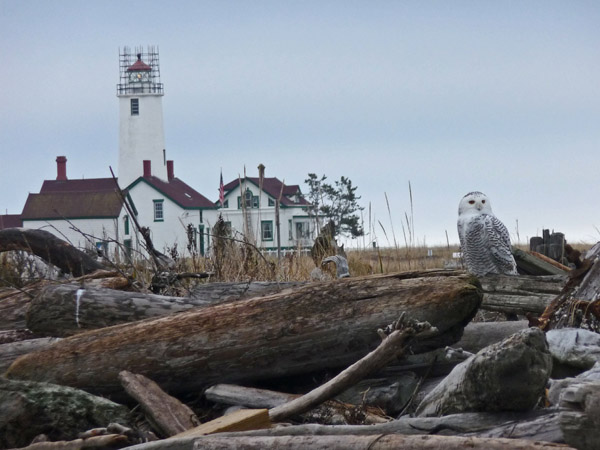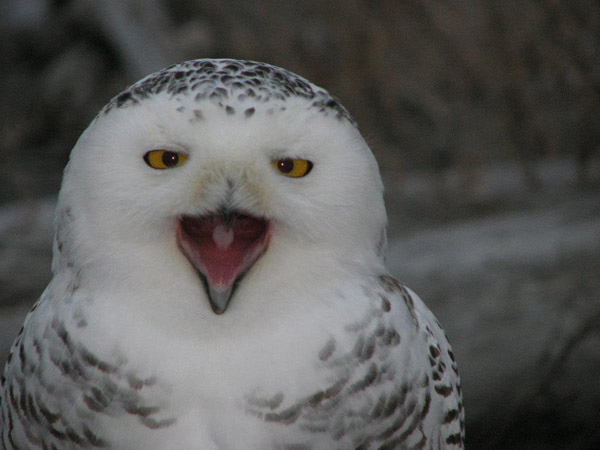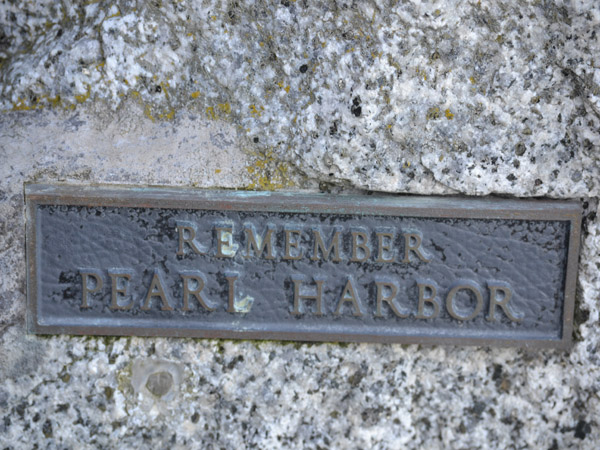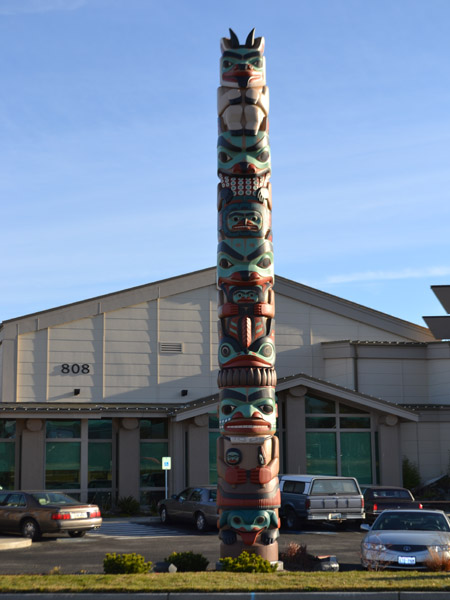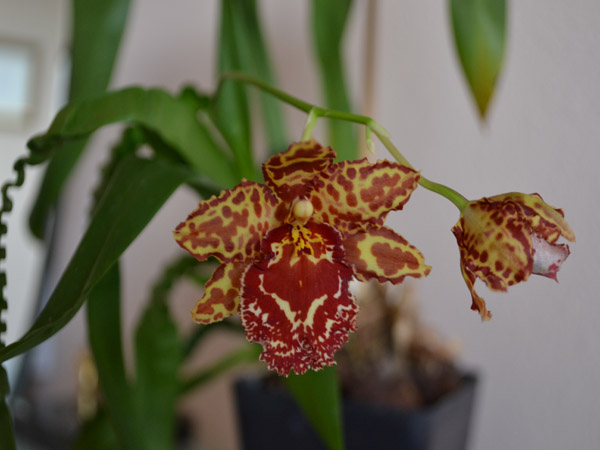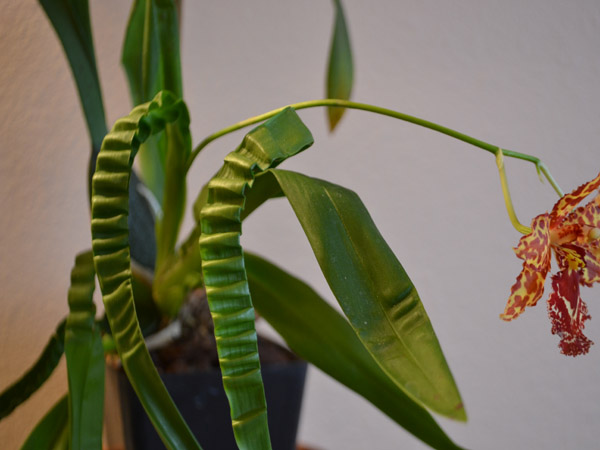You can find these road signs here and there around Sequim. And you can, from time to time, get caught on the road behind a slow tractor. I’d much rather deal with a slow tractor than being caught in a city traffic jam.
Author: Kay
Olympic Discovery Trail
Here’s a view of the Olympic Discovery Trail (ODT) looking west from Kitchen-Dick Road. The ODT is an ambitious trail project which, when completed, will stretch 130 miles from Port Townsend to the Pacific Ocean. Five original railroad trestles have been converted for trail use. This year is expected to mark the completion of 53 miles. It is an interesting trail in that it traverses towns, farms, fields, and the rivers and streams of the Olympic Peninsula. It is a wide, paved multi-use pathway. Unlike wildland trails, it crosses city streets so users do need to be mindful of traffic hazards.
Very special visitors
We’ve had an uncommon treat on the Olympic Peninsula lately: snowy owl sightings. According to the Peninsula Daily News and the Dungeness River Audubon Center, snowy owls migrate from the Arctic to Washington state every three to seven years. This is the result of a good feeding year in which many young owls survive to migrate south in search of food. Click the link above for more information from Wikipedia.
The first of these owls were sighted at the Dungeness Spit. These spectacular shots were taken by our friend Miriam and her daughter Tami last month during a stay at the New Dungeness Light Station. They were gracious enough to share them with Sequim Daily Photo.
Snowy owls have a wingspan up to 52 inches and look quite large but an adult weighs only about 4 pounds. The size/weight illusion is due to lots of feathers and hollow bones.
Unlike more familiar owls, snowy owls will hunt in daylight. We saw a snowy on the wing during walks in the Dungeness Recreation Area on both Friday and Saturday at dusk. Their large wingspan and bright white feathers make them readily identifiable — and an exciting sight. Owl sightings are a rare treat for daytime walkers.
This was a long, slow yawn that Tami caught. “I’m so bored with all these paparazzi!” Tami’s two shots are the close-ups; Miriam took the two shots of the owl on its perch. I’m so grateful for their willingness to share!
You may have noticed the scaffolding on the lighthouse above. It was used during replacement of the vent ball at the top of the lighthouse in December. A new 200-pound specially cast brass ball was purchased by the New Dungeness Lighthouse Association and hoisted to its spot in the peak of the tower by members of the U.S. Coast Guard.
Marlyn Nelson County Park
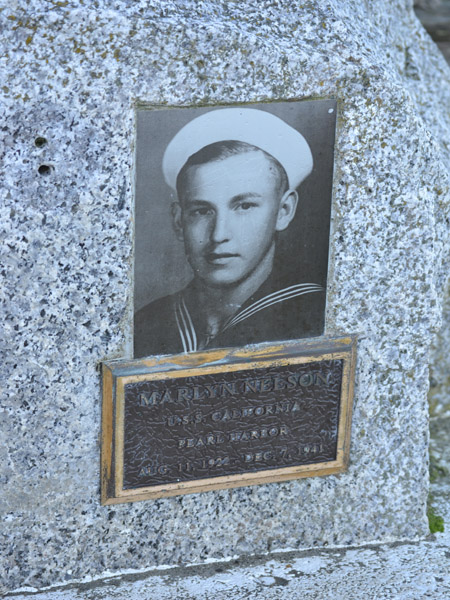
Port Williams is formally known as Marlyn Nelson County Park. There is a small monument located above the beach, not far from a picnic table overlooking the water. It is dedicated to Maryln Wilson, a young man who died at age 19 in the U.S.S. California at Pearl Harbor on December 7, 1941.
The memorial was dedicated in November, 1944 by C.W. Mays, a Pearl Harbor survivor who was aboard the U.S.S. Nevada. This plaque, located on the Nelson memorial startled me into reverie. Although World War II was over before I was born, “Remember Pearl Harbor” was still part of the national consciousness when I was a child. Since then we’ve undertaken “police actions,” undeclared wars, invasions, and such all over the world. And, of course, we had 9/11. Each sears new images, slogans, or some new marker in our sense of history and our friends and foes change. Regardless of justifications, rights and wrongs, what’s sad to me is that we do forget so many lessons we should have learned as we launch into each new action.
Totem update – Jamestown Family Health Center
Early last month I posted pictures of this totem pole that is located at the Jamestown Family Health Center in Sequim. I didn’t know the stories associated with the pole. I heard from a local, Betty, who informed me that the waiting room at the Health Center has informational brochures about the totem and I picked one up. Thank you, Betty! Here is more information about the “Healing Arts Totem Pole” taken from the brochure provided by the Tribe.
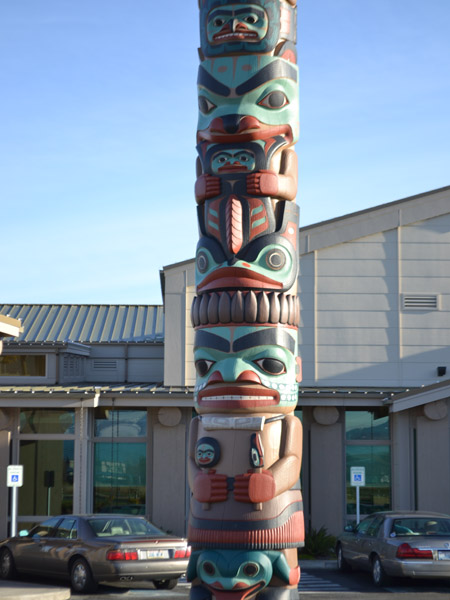
At the bottom of this 38-foot pole is a shaman or medicine man whose traditional role is to assure the health and prosperity of the community. He is seen as an intermediary between the natural and supernatural worlds and his most important role is to cure the sick. A shaman derives his healing powers from “spirit helpers,” animal spirits who possess the secrets of life and death and who share these gifts with the shaman. The shaman’s paraphernalia, a rattle and a baton, a crown of mountain goat horns, and a “soul catcher” around his neck, aid him in moving into a trance state to do his healing work. Below the shaman is Frog who lives on both land and in the water and also has the transformational power to morph from a fishlike tadpole into a four-legged frog.
Above the shaman is Sculpin, a guide to aid the shaman in returning to the physical plane. Sculpin is a fish that can also grant certain powers. Above Sculpin is Land Otter. At home on land or in the water, Land Otter is considered a powerful supernatural assistant.
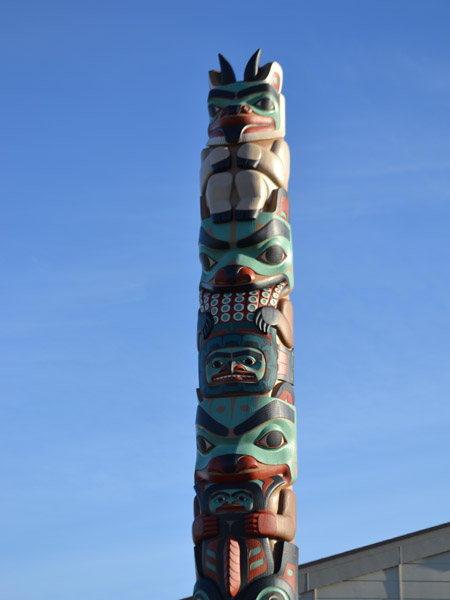
Above Land Otter is Octopus. Octopus is capable of transforming his color, shape, and texture and is considered a great ally when opposing evil spirits. Second from the top is Wolf, who helps to guide the shaman back to the secular world after his spirit world travels. And at the top is Mountain Goat. Mountain Goat lives between the terrestrial world and the sky world and travels ahead of the shaman to guard him against danger.
The S’Klallam brochure does not identify the carving style used for this totem except to note that their totems “represent some aspect of Northwest Native and/or Jamestown S’Klallam life.” The Tribe’s totems at their 7 Cedars Casino are done in a variety of Northwest cultural styles. This one at the Health Center looks Tlingit to me.
Winter color
It’s tough to fall in love with an orchid, bring it home, and then discover that the spot that seemed perfect simply isn’t. I’m pleased to find that I have an inside spot where orchids seem to be happy, which means for me that an orchid keeps living and blooms again. I think this one is an odontoglossum, but it’s hard to be sure because there are so many hybrids.
In addition to finding the flowers fascinating, the leaves on this plant pop out with a fascinating ruffle. I’m not sure if this is a typical growth habit, but they seem to straighten out and grow normally so I consider it another pleasure of keeping the plant alive. It’s nice to have a plant that is blooming in winter.
Windbreak
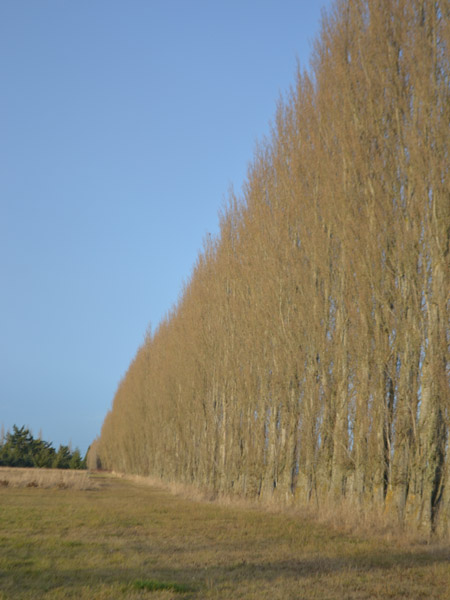
If you look at Sequim on a regional map you can see that the landform bulges out into the Strait of Juan de Fuca, particularly in the northern Dungeness area. At times this maritime influence delivers the brunt of high winds.
Planted windbreaks like these are somewhat common around here. This is another view of the lombardi poplar “four seasons trees” that I posted here recently. These trees seem to hold up well against the wind. Others have the look of artistic topiary as they grow bent from the sometimes brutal westerly winds.
